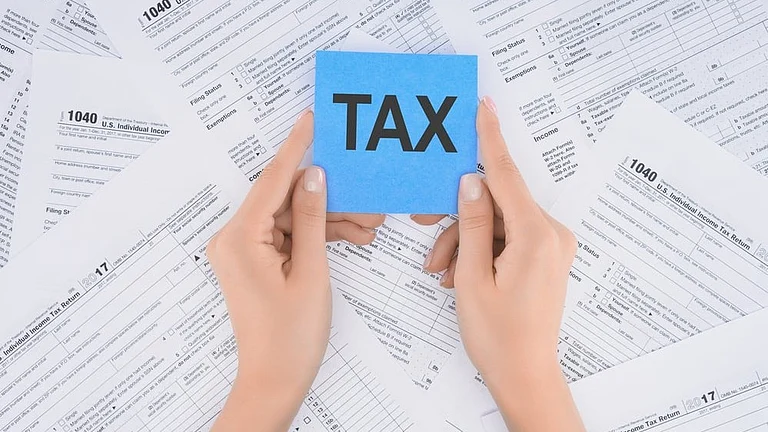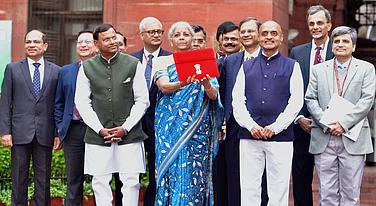The United Nations’ June briefing held out a new degree of optimism with the world economy expected to grow by 2.7 per cent in 2024 (an increase of 0.3 percentage points from the forecast in January) and 2.8 per cent in 2025 (an increase of 0.1 percentage points).
For India, financial year 2024 has been a year of reckoning too as the economy that grappled with demand side volatility, was yet able to grow close to 8 per cent. RBI’s estimate for FY25 growth is promising to begin with as it forecasts that ~8 per cent annual GDP growth for the rest of the current decade is sustainable. From a fiscal health standpoint, tax collections have been robust for nearly a full year. Both direct and indirect tax collections grew faster than in the previous financial year at ~11 per cent and 21 per cent respectively.
Arguably, these macro-economic trends do set up an encouraging backdrop for the government to hit the ground running with its reform agenda, picking from where it left off just before General Elections. At large, industry expects the government will likely take this year’s budget as an opportunity to create a solid policy core for the economy to race ahead in the fast lane for the next decade, requiring structural reforms across the board; tax policies and legislations not to be left out in this process.
Case for Overhaul
From a tax policy standpoint, a case has long been made out for overhaul of direct tax legislation that has not only become a monolithic document over decades but has also often struggled to keep pace with the emerging businesses. Replacing the existing legislation with a new Direct /Income Tax Code with an aim to simplify legislation itself but more importantly, to do away with archaic provisions in the law, ought to be imminent as priorities are set by the Budget team in North Block.
To visualise a new version of the legislation, it ought to be framed in simplified legal language, fewer tax exemptions /exceptions, unified tax regime that promotes capital formation and investments in long term infrastructure /industrial priority projects. Even more critically, the new version of the tax law must provide for dispute resolution mechanism to discourage frivolous litigation and instead, promote voluntary compliances.
That said, lawmaking is a time-consuming exercise even with the noblest of intent and efforts. It wouldn’t be unfair at all therefore, if the government carries out another pool of changes in the current legislation to move the needle on two key priorities – one, doubling down to encourage voluntary compliances amongst taxpayers (both new and old), and two, promoting long term capital investments (both equity and debts) across sectors notably in manufacturing, infrastructure, new energy and climate projects, R&D and other sunrise sectors like space.
Think of Long Term
An overarching motif of many of these changes ought to be the certainty of outcomes for taxpayers and businesses over a longer time horizon. It will therefore bode well if changes carried out are not tentative, meant for a limited period of a year or two as has been the case in the last few instances.
One such widely anticipated ask from India Inc is extension of concessional corporate tax rate regime (15 per cent) for new manufacturing companies which expired recently in March 2024. Over past four years, the benefit of lower tax rate has been one of the key elements in resurrecting India’s manufacturing sector. It would make sense to reinstate the lower tax rate for eligible businesses, without even a sunset clause, such that businesses can plan their timelines in a tax-neutral manner. A complementing tax policy to provide production-linked incentives for priority sectors can be a net positive for economic growth.
The aforesaid rollover of lower tax rate benefit will promote investments into the power generation sector too. This is key to achieving India’s 500GW non-fossil fuel capacity target by 2030 and other nationally determined contributions, in the journey towards net-zero goal. More such tax incentives shall be needed for well-rounded green and sustainable development in the country; one of them being concessional tax rate for interest on foreign borrowings that could be linked to sustainability benchmarks such as green bonds, intended to be utilised for notified purposes viz. power generation from renewable sources, waste to energy, green hydrogen.
India becoming a global R&D hub can be predicted on a number of factors. Having in place a tax regime that promotes large scale investments, can be easily held out as one of these driving factors. Whilst India is already a thriving destination for MNEs setting up Global Capability Centres, a combination of measures such as accelerated recovery of original capital cost and tax holiday for 5 to 7 years, could tip the scale in favor of India becoming one of the most sought after destinations for development of new R&D activities too.
Globally, the tax policy landscape has been dynamic as countries implement the organisation for Economic Cooperation and Development’s global minimum tax rules into their domestic tax laws. Multinational enterprises are slowly gearing up to prepare themselves to comply with compliance requirements of Globe Information Return and accounting disclosures. It would be only logical that the government lays out a clear roadmap for implementation of Pillar 2 in the Indian context, as global compliances kick in over next 12 months or so.
Streamlining Dispute Mechanism
One of the attributes of modern tax legislation is having an in-built progressive framework for faster and non-adversarial dispute resolution. Indian tax legislations at large have lacked in this context. It will make tremendous sense if income tax dispute resolution framework can be relooked at, to provide for alternate resolution. Whilst one time amnesty / settlement schemes have been in vogue in the past and are admittedly effective to clear up the dispute pipeline, there is an impending need to reduce the instances of tax disputes by providing for a higher threshold for revenue to litigate.
More importantly, disputes arising out of interpretation of bilateral tax treaty must be clubbed and resolved speedily to prevent misperception of India’s tax system to be draconian. One such instance is the recent decision of the Supreme Court in the case of Nestle SA, on the manner of interpreting protocol to a bilateral tax treaty, as this case has had far reaching consequences at the principal level. While formal guidelines as to the manner of interpretation of protocols to treaties between India and various countries shall be welcome, a well-balanced settlement scheme for the past can offer relief and certainty to taxpayers while shoring up tax collections from the perspective of the tax administration.
Whilst the B-Day nears, expectations may be mounting as the economy resets itself for a higher growth trajectory. Reasonably, if the Budget delivers on a few top priorities in terms of tax policies and sets a course of continued policy intervention, it will be a great start already.
(Authors are Partners at Deloitte India. Views expressed here are personal)

























